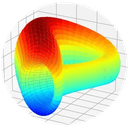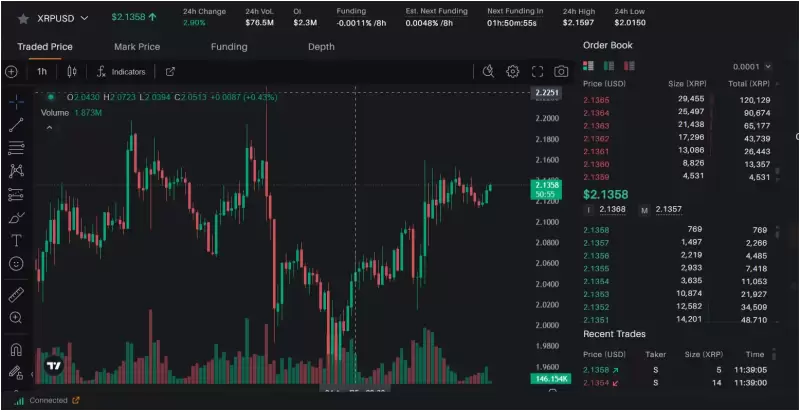 |
|
 |
|
 |
|
 |
|
 |
|
 |
|
 |
|
 |
|
 |
|
 |
|
 |
|
 |
|
 |
|
 |
|
 |
|
無需外部電源即可監控您的體溫、追蹤您的活動或讓您保持舒適。

Imagine clothing that monitors your temperature, tracks your activity, or keeps you cozy all by itself without needing an external power source.
想像一下,衣服可以監測您的體溫、追蹤您的活動或讓您保持舒適,無需外部電源。
Well, all this and more is fast becoming a reality thanks to all the research and development happening at the intersection of tech and clothing.
嗯,由於科技和服裝交叉領域發生的所有研究和開發,所有這一切以及更多正在迅速成為現實。
Technological advancement has been transforming our lives by making our phones and home appliances smarter. Now, even our clothes are becoming smart, unlocking possibilities that pave the way for an exciting and more sustainable future.
科技進步使我們的手機和家用電器變得更加智能,從而改變了我們的生活。現在,甚至我們的衣服也變得智能,釋放出各種可能性,為令人興奮和更永續的未來鋪平道路。
The global smart textile market is already valued at $4.1bln and is projected to rise to $24.5 bln by 2032. Interestingly, energy harvesting currently accounts for the largest share of this market, according to Markets and Markets.
全球智慧紡織品市場價值已達 41 億美元,預計到 2032 年將增至 245 億美元。
Energy harvesting is converting ambient energy into electrical energy to power autonomous electronic devices. This energy can be harvested from various sources, including mechanical and thermal. To create energy-harvesting textiles, active materials are usually added to the textile's surface or woven or embroidered into it.
能量收集正在將環境能量轉換為電能,為自主電子設備供電。這種能量可以從各種來源獲取,包括機械能量和熱能量。為了製造能量收集紡織品,通常將活性材料添加到紡織品的表面或編織或刺繡到其中。
Such smart fabrics can potentially be utilized as an alternative to batteries, which require recharging or periodic replacement because they contain only a finite amount of energy. In wearable textile applications, batteries tend to be rigid, bulky items that must be removed before washing and hence need improvement.
這種智慧織物有可能用作電池的替代品,因為電池只包含有限的能量,因此需要充電或定期更換。在穿戴式紡織品應用中,電池往往是堅硬、笨重的物品,必須在清洗前移除,因此需要改進。
While still at a relatively early stage, this sector is growing rapidly, driven by a combination of factors, including technology advances, design, consumer demand, miniaturization, and government policies.
雖然仍處於相對早期階段,但在技術進步、設計、消費者需求、小型化和政府政策等因素的推動下,該行業正在快速成長。
Now, let's take a look into the exciting innovations in the sector and the literal power of the clothes that we wear!
現在,讓我們來看看該領域令人興奮的創新以及我們所穿衣服的真正力量!
Smart Fabric to Convert Body Heat Into Electricity
智慧織物將體熱轉化為電能
One of the most recent and electrifying developments was made by researchers from the University of Waterloo in collaboration with a leading institution in textile science and engineering at Jiangnan University, who created a smart fabric that converts thermal energy from the body and sunlight into electrical power.
滑鐵盧大學的研究人員與江南大學紡織科學與工程領域的領先機構合作,取得了最新的一項令人興奮的進展,他們創造了一種智能織物,可以將身體和陽光的熱能轉化為電能。
This smart fabric has the capability to generate power, observe health metrics, and track physical activity. These sensors allow the fabric to detect temperature changes and monitor pressure, stress, and chemical composition.
這種智慧織物能夠發電、觀察健康指標並追蹤身體活動。這些感測器使織物能夠檢測溫度變化並監測壓力、應力和化學成分。
A promising application of this fabric is smart face masks that can track the temperature and rate of your breath as well as detect chemicals to help identify conditions like lung cancer and viruses. According to Yuning Li, director of the Printable Electronic Materials Lab at Waterloo and a professor in the Department of Chemical Engineering:
這種織物的一個有前途的應用是智慧口罩,它可以追蹤你的呼吸溫度和速率,並檢測化學物質以幫助識別肺癌和病毒等疾病。滑鐵盧大學可印刷電子材料實驗室主任、化學工程系教授李宇寧表示:
“We have developed a fabric material with multifunctional sensing capabilities and self-powering potential (that) brings us closer to practical applications for smart fabrics.”
“我們開發了一種具有多功能感測能力和自供電潛力的織物材料,使我們更接近智慧織物的實際應用。”
The fabric designed by the team is flexible, MXene-based, thermoelectric, and can precisely determine strain stimuli and temperature. To achieve this, the team developed a layer of adhesive polydopamine (PDA) on the surface of the nylon fabric, which facilitated the MXene attachment through hydrogen bonding.
團隊設計的織物是柔性的、基於 MXene 的熱電織物,可精確確定應變刺激和溫度。為了實現這一目標,團隊在尼龍織物的表面上開發了一層黏合性聚多巴胺(PDA),這有助於透過氫鍵連接 MXene。
MXene has been drawing a lot of attention for its rare combination of properties like layered structure, flexibility, large surface area, electric and metallic conductivity, biocompatibility, hydrophilicity, size tunability, and rich surface chemistry. The study noted:
MXene 因其罕見的特性組合而受到廣泛關注,例如層狀結構、柔韌性、大表面積、導電性和金屬導電性、生物相容性、親水性、尺寸可調性和豐富的表面化學性質。研究指出:
“The resultant MXene-based thermoelectric fabric exhibits outstanding temperature detection capability and cyclic stability while also delivering excellent sensitivity, rapid responsiveness (60 ms), and remarkable durability in strain sensing (3200 cycles).”
「由此產生的基於 MXene 的熱電織物具有出色的溫度檢測能力和循環穩定性,同時還具有出色的靈敏度、快速響應能力(60 毫秒)和卓越的應變感測耐用性(3200 次循環)。”
The novel fabric is not only more cost-effective, durable, and stable than other fabrics on the market, but unlike the current wearable devices that need frequent recharging, this one can operate without requiring an external source of power. This way, the research demonstrates the huge potential of integrating conductive polymers and MXene with modern fabric tech for the advancement of smart fabrics.
這種新穎的面料不僅比市場上的其他面料更具成本效益、耐用且穩定,而且與當前需要頻繁充電的可穿戴設備不同,這種面料可以在不需要外部電源的情況下運行。透過這種方式,研究證明了將導電聚合物和 MXene 與現代織物技術相結合對於推動智慧織物的發展具有巨大潛力。
Noting the various progress made in tech, including AI, which is evolving rapidly to offer advanced signal processing for health monitoring and the preservation of food and pharmaceuticals, Li argued that all these advancements rely on ‘comprehensive data collection, which traditional sensors—often cumbersome, expensive, and unwieldy—are unable to achieve.' This makes printed sensors, embedded in smart fabrics, ideal for continuous data collection and monitoring, Li added.
李指出,包括人工智慧在內的技術取得了各種進步,人工智慧正在迅速發展,為健康監測以及食品和藥品的保存提供先進的信號處理,所有這些進步都依賴於「全面的數據收集,而傳統的傳感器通常很麻煩” 、昂貴且笨重——無法實現。李補充說,這使得嵌入智慧織物中的印刷感測器成為連續資料收集和監控的理想選擇。
While this innovative fabric marks significant progress in making these applications feasible, the researchers will now focus on further improving the fabric's capabilities and incorporating it with electronic systems. A smartphone app may also be part of this future development to track and transmit data from the fabric to healthcare professionals for real-time, non-invasive health monitoring.
雖然這種創新織物標誌著在使這些應用可行方面取得了重大進展,但研究人員現在將專注於進一步提高織物的功能並將其與電子系統相結合。智慧型手機應用程式也可能是未來開發的一部分,用於追蹤織物數據並將其傳輸給醫療保健專業人員,以進行即時、非侵入性的健康監測。
Pioneering Fabrics of the Future
未來布料的先鋒
Advancements in smart clothing have been happening rapidly for some time now. In 2016, researchers from the Georgia Institute of Technology in Atlanta created a micro-cable power fabric that could harvest energy from sunlight and motion.
一段時間以來,智慧服裝的進步一直在迅速發生。 2016 年,亞特蘭大佐治亞理工學院的研究人員創造了一種微電纜電力織物,可以從陽光和運動中收集能量。
For this, the scientists weaved thread with thin, fiber-based solar cells and triboelectric nanogenerators. The resultant smart fabric had a 320 μm thick single layer and could be integrated into tents, curtains, and various clothes. The textile, as per the study, could directly
為此,科學家們用細纖維太陽能電池和摩擦奈米發電機編織了線。由此產生的智慧織物單層厚度為 320 微米,可整合到帳篷、窗簾和各種衣服中。根據研究,這種紡織品可以直接
免責聲明:info@kdj.com
所提供的資訊並非交易建議。 kDJ.com對任何基於本文提供的資訊進行的投資不承擔任何責任。加密貨幣波動性較大,建議您充分研究後謹慎投資!
如果您認為本網站使用的內容侵犯了您的版權,請立即聯絡我們(info@kdj.com),我們將及時刪除。
-

- 分析師建議,美國政府可能正在悄悄準備庫存比特幣。
- 2025-04-17 17:40:12
- Galaxy Digital的公司研究負責人Alex Thorn建議,美國政府可能準備在一種新型的戰略儲備中添加比特幣
-

- XRP價格分析:低於$ 2.150的看跌區
- 2025-04-17 17:40:12
- XRP最近進入了下行校正,移至2.150美元以下。從2.250美元的電阻水平撤退後,價格現在正在鞏固
-

-

- 加密貨幣市場趨勢的概述
- 2025-04-17 17:35:12
- 加密貨幣市場最近穩定,總市值約為2.7萬億美元。
-

- 儘管面臨宏觀經濟逆風的看跌壓力,但XRP價格仍被多個看漲催化劑所包圍。
- 2025-04-17 17:30:12
- 其中包括SEC訴訟的結束,可能的迅速整合,以及最近預計的Stablecoin市場增長。
-

-

-

- Solana(Sol)領導加密貨幣市場恢復,比特幣(BTC)收回$ 84,000
- 2025-04-17 17:25:12
- 加密貨幣市場在周四的亞洲交易小時內獲得了適度的恢復,這逆轉了前一天的拋售損失的一部分。
-




























































